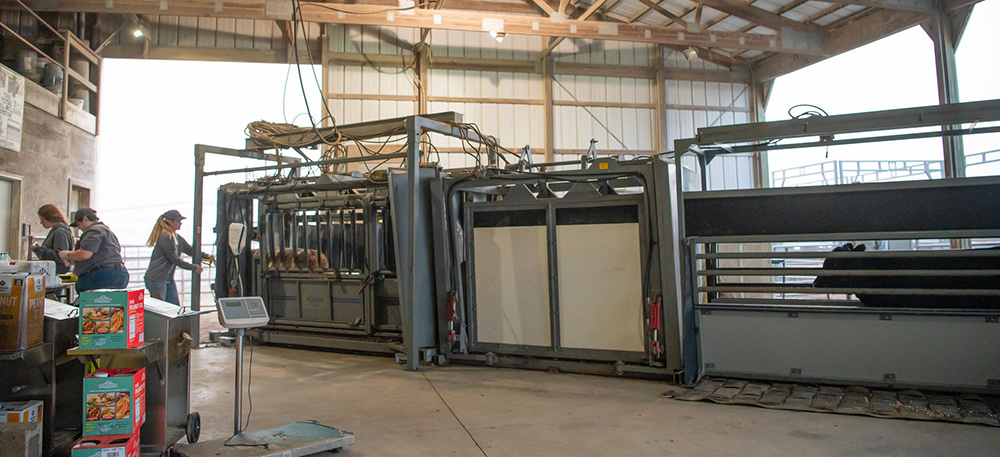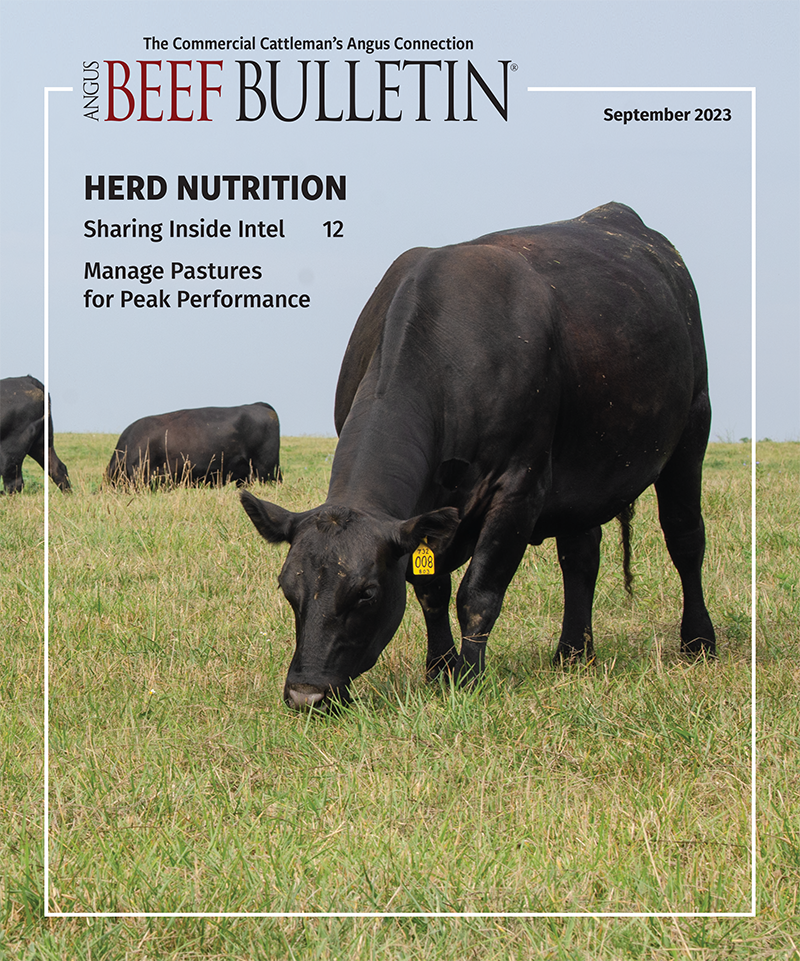
When moving cattle through a system, it is important to have well-trained help.
K-State Beef Cattle Experts Share Advice on How to Keep Cattle Calm
Knowing “flight zone” and “point of balance” helps in moving animals.
In ag circles, it’s often jokingly said that to test the strength of a marriage, just work cattle together. Anyone who has helped move cattle can attest processing time is often stressful, for the animals as well as the people.
To minimize everyone’s stress, the team of experts at the Kansas State University (K-State) Beef Cattle Institute (BCI) have some advice to keep things running smoothly on processing day.
“Pick the right people to help with the cattle handling, meaning that the helpers need to move the cattle at appropriate speeds without yelling,” says K-State Veterinarian Bob Larson.
Following up on that advice, K-State Beef Cattle Nutritionist Phillip Lancaster says it is important helpers are familiar with concepts of flight zone and point of balance.
“The flight zone refers to where the handler stands relative to the animals in trying to get them to move in a desired direction, and the point of balance is a part of the flight zone behind the animal’s shoulder that is most effective in getting them to move forward,” he explains.
Larson agrees being aware of the cattle’s flight zone is important.
“I’ve seen people try to work cattle in poorly constructed facilities that violate the flight zone, and it does not go well because the cattle don’t easily cooperate,” he says.
Therefore, Larson’s second point is to make sure the cattle are being moved through well-designed facilities.
Make sure you don’t overfill the the facility, Larson advises. Two facility types Larson recommends for handling cattle are a Bud Box and a tub.
A Bud Box, he says, is a square holding pen in which the handler has to move the cattle to the alley for processing, while a tub is a circular system that the cattle move through.
“After the cattle move through the Bud Box or tub, they need to be headed down an alley with a high-quality chute at the end,” Larson says.
To encourage fluid movement through the system, it helps if the cattle can see an open gate, Lancaster says. “Cattle don’t like to be boxed in; so, if they can see an opening, they will move much easier toward that open gate.”
To know if the system is working well, Lancaster suggests looking at the cattle and how they behave as they move through the system.
“A good animal handling system will not require a prod or other tools to get the cattle to walk through,” says Lancaster.
It is important to watch how cattle exit the chute, as well, says Brad White, K-State veterinarian. “If most of the cattle just walk out of the chute system rather than bolting on exit, then that is the sign of cattle that are not stressed.”
Larson and White advise looking at the demeanor of the help as an indicator of a low-stress system.
“If the people who are working the cattle are calm and not yelling, then that, too, is a sign that the system is working well for everyone — cattle and people,” Larson says.
Exercising patience is key when working with animals, adds White. “Rather than ramping up the intensity, it is good to just take a breath and try to encourage the animal calmly.”
Larson says that while many people enjoy having their dogs around when working cattle, he advises against that.
“While I can appreciate a good cattle dog, they should be in the truck when working cattle, because dogs are not low-stress cattle handlers,” he says.
Editor’s note: Lisa Moser is a professor of ag communications at K-State.



